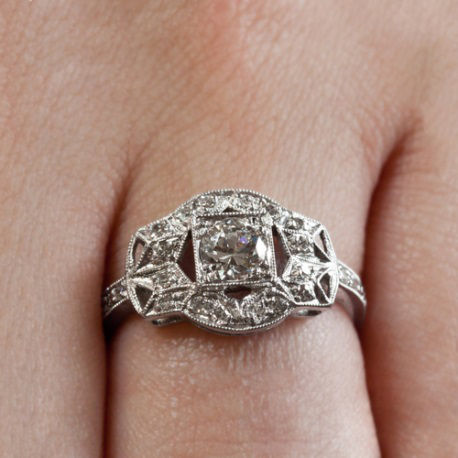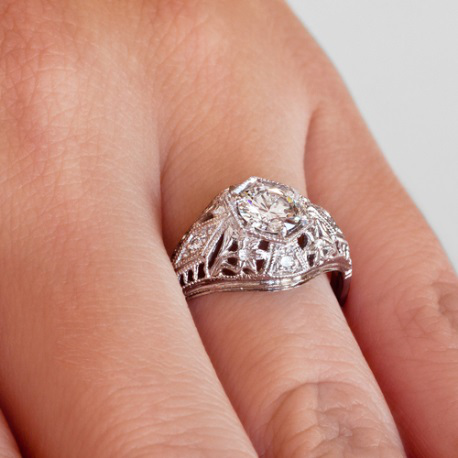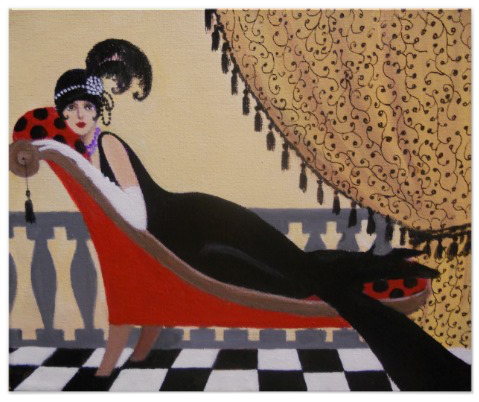After the ravages of WWI and the flu pandemic of 1918, people wanted to grab all they could out of life. After all, it might end in an instant. This was the era of the F. Scott Fitzgerald's The Great Gatsby. Flappers weren't going to let the rules of Edwardian society tell them what women should and shouldn't do. (And those rules were much less restrictive than those of the Victorians!) No, flappers believed they were capable of doing all that men could do and more.

Art Deco platinum and diamond ring.
(Available at Yates & Co. Jewelers)
Like the flappers, Art Deco jewelry was bold and forward-thinking. As with the art and architecture of the time, Art Deco jewelry had a marked geometric influence. Much of it still had the lacey platinum mountings of its Edwardian predecessors. But bold geometric shapes like triangles, rectangles and octagons were incorporated into the designs without apology.

Art Deco 14K white gold and diamond ring.
(Available at Yates & Co. Jewelers)
Along with futuristic geometric designs, Egyptian motifs were common in Art Deco jewelry. King Tut's tomb had been discovered and reopened in 1922. The incredible trove of ancient jewelry and other objects contained within the tomb amazed and dazzled the world at the time. It created a demand for jewelry with motifs from other ancient civilizations, as well.
Common gemstones in Art Deco jewelry included diamonds, emeralds, rubies, onyx, green chrysoprase and carnelian. Chandelier earrings, brooches, rings and pendants were dripping in gemstones. After all, these sparkling jewels helped the dancing flappers show off while the big bands belted out their jazzy tunes.

Art Deco print of lounging lady wearing a classic 1920's cloche hat.
(zazzle.com)
Just prior to the Art Deco period in 1919, Belgian mathematician Marcel Tolkowsky invented the round brilliant (or ideal) cut for diamonds. He calculated the precise proportions and angles needed to make the most brilliant, light-catching diamond cut possible. Geometry and angles were the backbone of Art Deco jewelry. Tolkowsky's brilliant cut was wholeheartedly embraced. It has been the standard by which all American diamonds have been judged ever since.
Learn about the other antique & vintage jewelry periods.
Visit our Antique & Vintage Jewelry Time Periods page.





